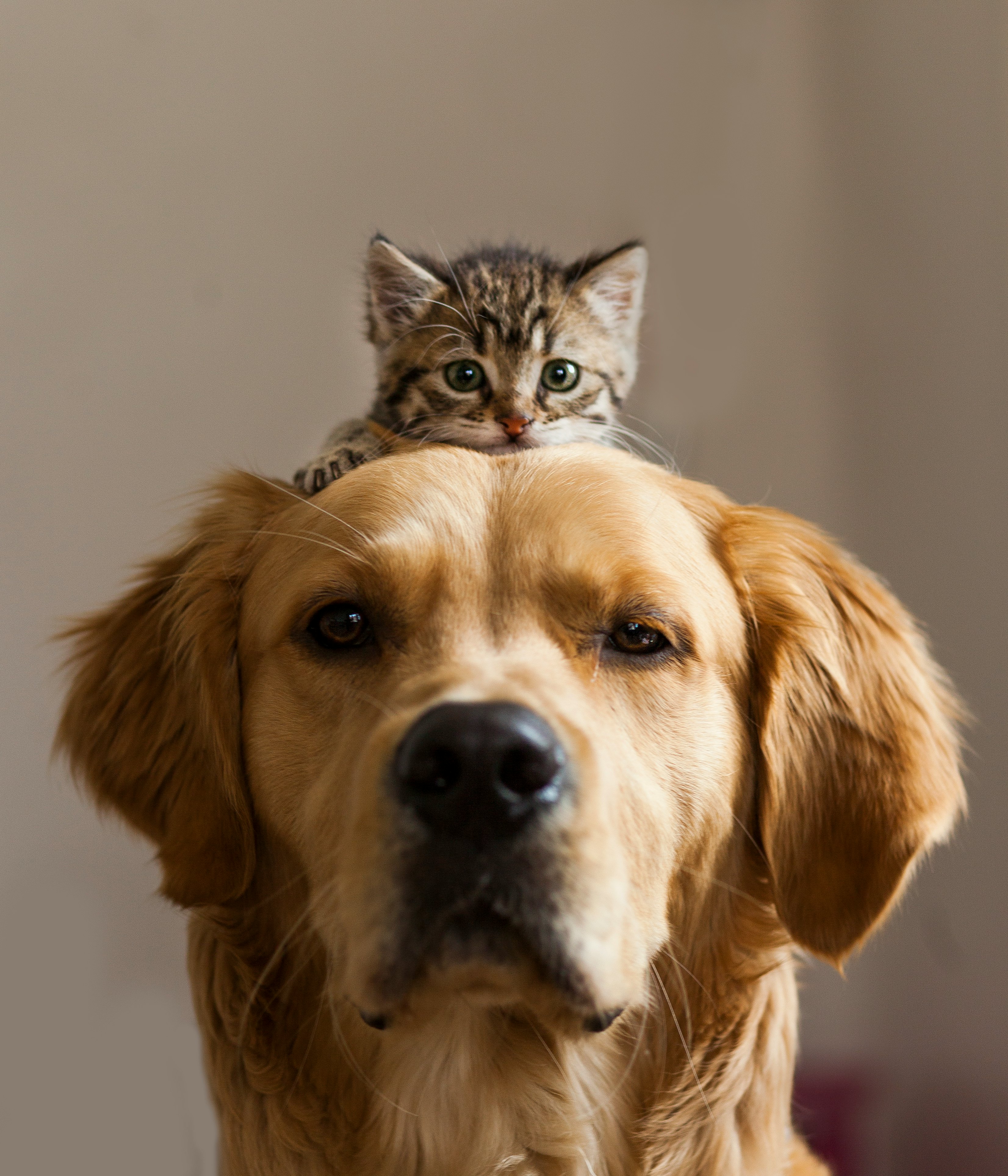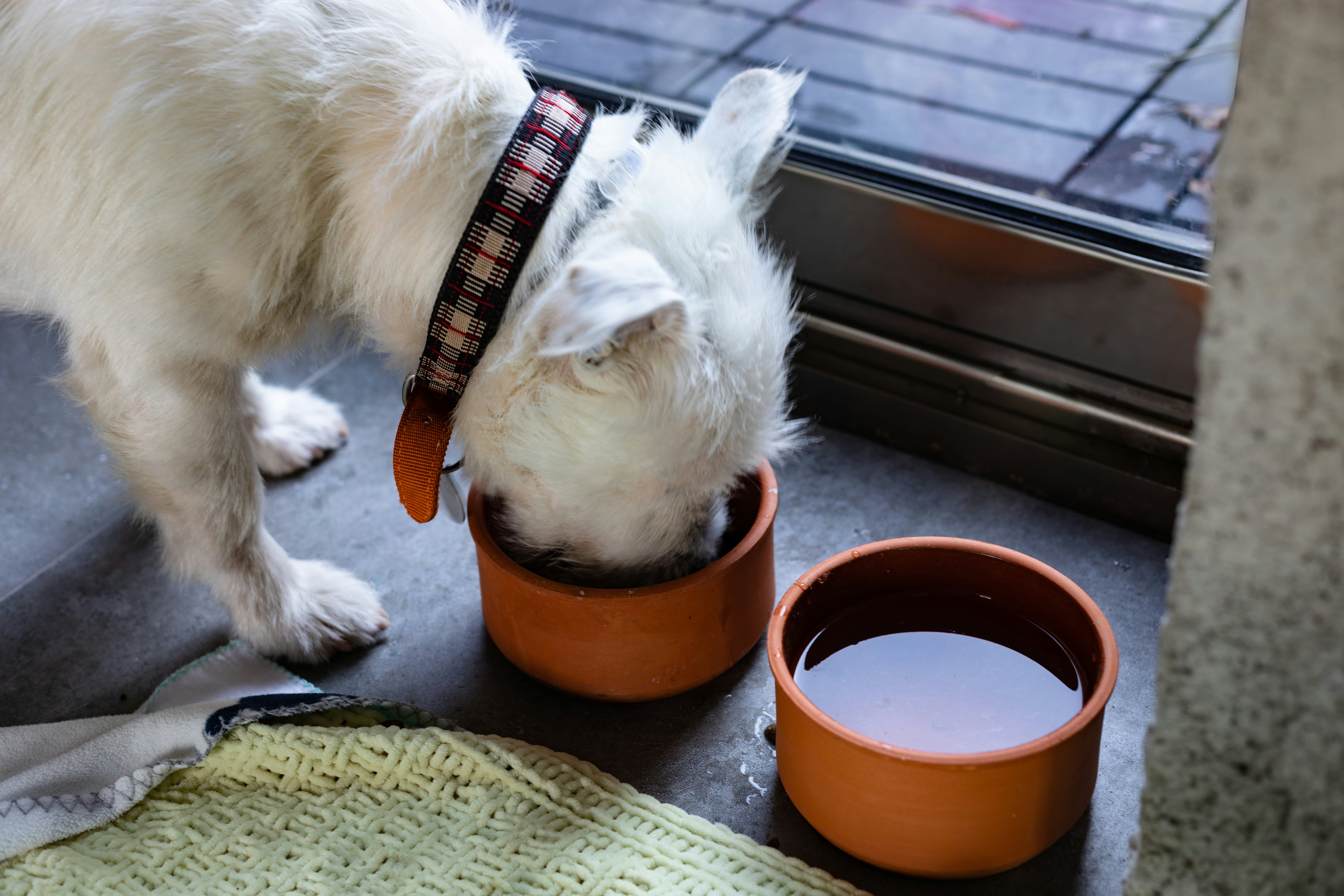
At first glance, cats and dogs might seem like creatures from two different planets.
Humans tend to stereotypically view cats as aloof and unpredictable and dogs as loyal and expressive. Experts say these stereotypes are exaggerated and not totally accurate, but pet owners may still worry about cohabitating with two animals that display different communication styles — and potentially consider each other prey and predator.
Well, fear not — Inverse interviewed several pet experts about the do’s and don’ts of living with cats and dogs. Here’s what they had to say about helping your feline and canine lead a peaceful coexistence. Spoilers: it’s not an impossible feat.
“Much like cats and dogs adapt to living with a different species — us!— they seem equipped to adapt to each other as well,” Mikel Delgado, a cat expert at Feline Minds, tells Inverse.
Can cats and dogs live in the same household?

Delgado says that cats and dogs can be good friends, but their ability to get along depends on each animal’s personality, the circumstances around their introduction, and the way pet owners manage their shared environment.
It’s best to either socialize them early on in life so they don’t develop predatory behaviors, or look for dogs with low prey drives that will be okay with cohabitating with a cat so you are “minimizing stress to either species as they begin to develop this relationship within a shared space,” Leigh Siegfried, founder of the research-based dog training company Opportunity Barks, tells Inverse.
“However, if you bring a cat into a home that isn’t used to cohabitating with dogs, you could get a lot of avoidance and flight behavior from the cat, which can trigger a dog to chase,” Siegfried says.
Rosie Bescoby, a clinical animal behaviorist and media officer for the Association of Pet Behaviour Counselors, agrees, as pets introduced in this period can “learn to either ignore each other or at best understand each other’s body language signs and communication.”
“You obviously won’t be able to have a hunting type dog living with a skittish cat unless you’ve done some proper socialization and training,” Chyrle Bonk, a veterinarian at PetKeen, tells Inverse.
Ultimately, the species’ differing body language communication patterns matter less than these factors, but it is possible for a cat and dog to live together sharing resources in an “amicable way,” according to Bonk.
“Some dogs will chase a cat in play or stare at them, and cats won’t like that. But many dogs are very happy to share a home with a cat and can be good cat companions,” Zazie Todd, an animal behavior expert who has written several books on the subject of pet behavioral science, tells Inverse.
How should you introduce a cat to a dog (and vice versa)?

Let’s say you’ve decided to add a dog to your household of felines, or vice versa. How should you introduce them? You need to do some planning first to set your home for success, according to Todd.
For a cat, you’ll need to set up a room for your feline — no dogs allowed — where they have a litter box, food, water, and a scratching post. This is where they’ll camp for the first few days or weeks after coming to your home. Similar rules apply to dogs.
“If you’re bringing a dog home, don’t give them access to the whole house; make sure the cat has some rooms that are off-limits for the dog, at least until you see how things go,” Todd says.
Afterward, you can proceed forward with “gradual” scent introductions. Take something that smells of the dog to the cat (or vice versa), such as a blanket or other bedding the pet has slept on. Allow the pet to interact with the object in their own time. You can offer treats to help them associate the scent with something positive.
“Once they are reacting positively to the smell, you can start to do visual introductions through a door that is just ajar, and later a pet gate with more visibility,” Todd says. Make sure you have two humans on hand to facilitate these introductions — you want to keep each pet distracted with toys and treats so they’re not staring at each other the entire time, and Bonk says to make sure the first interactions are short with praise for good behavior. After this, interactions can become longer in length.
Once the introductions start to go off without a hitch, you can keep then keep them in the same room for brief periods, but make sure the dog is on a leash — at least at first — so they can’t chase the cat. Todd says the process may need to be moved back to an earlier step if it goes poorly.
In general: be patient with your pets. Delgado says the process can take several weeks, but don’t be afraid to seek professional help from a licensed animal or veterinary behaviorist if the animals continue to seem fearful or stressed..
How can I help my cat get along with my dog?

You can’t — and shouldn’t — force your pet to do anything that makes them feel uncomfortable, including making friends with other pets in the household.
“I would encourage calm, relaxed behavior around each other — as long as both species feel safe at all times, and are calm and relaxed, a friendship may well develop from that,” Bescoby says.
But you can abide by certain best practices to set up your cat and dog for success. First step: provide separate physical spaces where each can explore and feel safe.
Along with providing cats a separate area mentioned earlier, owners can provide vertical areas or the tops of cat trees where dogs can’t reach. “This will allow them to observe without being threatened,” Bonk says. Consider getting one or setting up places where pets can choose to be with others or by themselves.
Having separate spaces where they have the option to interact with each other — or avoid or simply observe each other if they choose — will keep each safe and allow them to move about the space without being chased. Siegfried refers to this type of setting as “managed inclusion.”
Also, experts say you can consider using dog crates, baby gates, and closed doors to help carve out these separate physical spaces. This might involve placing gates throughout the house or keeping the dog in a crate with a visual barrier while allowing the cat to roam free. Delgado says the litter box should ideally be kept in the dog-free area.
Siegfried adds, “The priority is helping both species establish a secure physical, mental and emotional space — not just physical space.”
Finally, Siegfried says you can try to exercise thoroughly outside the home and then bring them home to explore the home — on a leash — as the cat and dog are still getting to know one another.
Can my cat and dog share a water bowl?

One common issue that comes up in multi-species pet households: can they share the same water bowl? The answer is mixed.
Since dogs and cats will actually groom each other, disease transmission from sharing the same water bowl likely isn’t a problem, unless your cat or dog has a gastrointestinal or upper respiratory problem. Make sure to regularly wash the water bowl to prevent bacteria accumulation. Bonk adds that dogs also drink more water than cats, so check on water levels frequently, and multiple water bowls means different places to drink, according to Delgado.
But other experts worry about behavioral issues around sharing the same resource. Some pets may be controlling of the other’s access to the water, and conflict could arise if both pets try to access the water bowl at the same time. (For similar reasons, pets should be fed separately.)
Bescoby says, “I’d always suggest separate resources in a home with multiple pets, whether it is multiple cats or multiple dogs or a combination.”
Finally, a more stinky problem may arise in the litter box, since dogs like to eat cat poop and litter.
“As a general rule of thumb, you should have one litter box per cat plus one spare, and all of these should be out of reach of the dog,” Todd adds.
The Inverse analysis — With a little bit of foresight and monitoring, it’s likely possible for your pets to get along — even when they hail from different parts of the animal kingdom.







